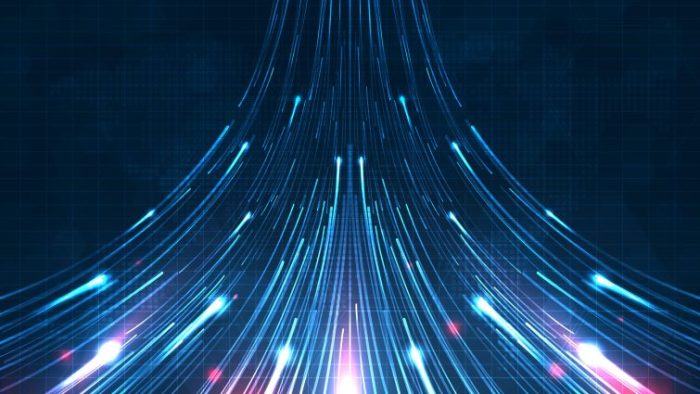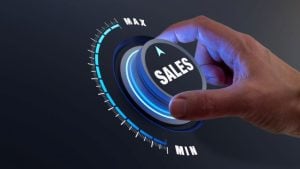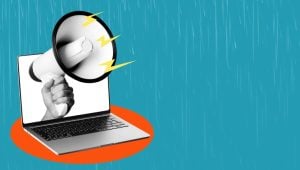The Future of Data Science: What to Expect in The Next Decade
 Publié le 18 August 2023
Publié le 18 August 2023
With algorithms driving more of the decisions in every industry, it’s important to consider the future of data science and what to expect in the next decade.
It’s an exciting time for the data science industry and business leaders are well aware of the importance of data science applications as a way to generate meaningful insights and make data-driven business decisions.
You may already be aware of the significant advances in data science being made right now, but what’s next for the future of data science? This article covers everything you need to know about data science and its trends that will define the next decade.
What is data science?
Data science is a multi-faceted and growing field that combines various processes and systems to extract information and insights from structured and unstructured data. Data science is an essential part of many industries, offering everything from predicting ecommerce trends to financial services IT solutions.
Data science works to uncover patterns, make predictions, and derive meaningful information from large and complex datasets. Typical data science methods include:
- Data mining: Extracting patterns, information, and insights from large datasets.
- Machine learning: Developing algorithms that use data to make predictions or decisions.
- Statistical analysis: Applying statistical methods and models to analyze and interpret data.
- Data visualization: Using charts, graphs, and other visual elements to communicate data insights in a visually appealing and easily understandable way.
Data engineers and scientists aim to gain actionable insights, solve problems, and help with business decisions with the support of data. This can include analyzing historical data to understand trends and utilizing real-time data for immediate insights.
How does data science work?
It’s important to understand how data science works, as this can help you know where it’s headed. There are several key components of data science that play a part in the collection, analysis, and communication of data:
Image Created By Writer
- Data Collection: The first step is always collecting the data. Data collection might be done using surveys, interviews, observations, market testing, and experiments, or data scientists gather existing data from various sources, such as databases, social media platforms, and published surveys and articles.
- Data Cleaning: Raw data often contains errors, missing values, inconsistencies, and noise (meaningless data). Data cleaning addresses these issues, ensuring that the data is reliable and suitable for analysis.
- Exploratory Data Analysis (EDA): EDA is the early analysis of data that helps data scientists make initial judgments about the data’s characteristics, identify patterns, and detect possible outliers or noise.
- Analysis and Modeling: Data scientists use a range of statistical methods, mathematical models, and machine learning algorithms to extract useful information from data and make predictions. They will also perform data modeling, which involves creating architecture for the data as a way of ordering it and preparing it for further analysis.
- Communication: Data science professionals need to effectively communicate their findings and insights to stakeholders, business decision makers, and wider audiences. Data needs to be presented in an understandable way, which is where data visualization comes in through charts, graphs, and interactive dashboards.
Data scientists use a range of tools, programming languages and models like a Python data pipeline, and visualization techniques to produce insights and actionable ideas from datasets. The future of data science will be all about improving, securing, and streamlining these processes.
6 data science trends for the next decade
1. Privacy and security will remain top concerns
Data breaches and privacy violations remain a top concern for business owners and customers and cybercrime is expected to increase over the next decade. That means that data science skills will need to include the prioritization of robust data privacy and security measures.
Image sourced from statista.com
Cybersecurity is one of many technology trends in the legal industry, as well as in FinTech, healthcare, and beyond. Techniques we can expect to see gain importance in coming years include:
- Differential privacy: Adding a controlled amount of random noise to a dataset to prevent the identification of specific individuals within the said dataset. This noise ensures that the statistical properties of the data remain intact and clear while still safeguarding individual privacy
- Federated learning: This machine learning tactic allows different data models to be trained on data from multiple sources without sharing the raw data itself. Instead of centralizing the data in one location, federated learning keeps the data on local devices or decentralized servers.
- Homomorphic encryption: This allows processes and analysis to be performed on encrypted data without decrypting it, ensuring that sensitive information remains protected even during data processing. This is especially useful when data needs to be outsourced for processing or when different groups or companies collaborate on analyzing encrypted data.
- Secure multi-party computation (MPC): Thisallows multiple individuals or groups to perform a task, such as analyzing data or applying models and methods, while keeping their individual inputs private.
Striking the right balance between data utility and privacy protection will be a critical challenge for data scientists. The above approaches are useful because they enhance security and privacy without sacrificing efficiency or utility, helping businesses and data scientists alike protect company, customer, and employee data.
2. More automation and augmentation
Automation has been a buzzword in data science (and business more broadly) for some time, and it’s not going anywhere in the future of data science. Automation of business processes and everyday tasks can save time and money and big data is helping companies do this.
By leveraging machine learning, companies will keep on using data to streamline and automate processes and workflows. Business owners looking for a Kubernetes alternative will continue to see an increase in automation platforms and open-source AI software.
Image sourced from salesforce.com
Augmented analytics, which combines artificial intelligence (AI) and automated machine learning (AutoML) with human expertise, will become commonplace as well. Various stages of the machine learning pipeline, including data cleaning and model selection, will be automated.
Augmented analytics and automation mean that data science will become faster, more efficient, and more accessible to non-experts outside of the data science field.
3. Advanced Deep Learning Architectures
Breakthroughs in areas such as computer vision, natural language processing, and speech recognition are why deep learning is revolutionizing data science and AI. Deep learning is a type of machine learning with multiple layers of computations that can process data in an increasingly complex fashion.
In the next decade, we can expect to see the emergence of advanced deep learning architectures. Models with improved interpretability, more efficient training methods, and the ability to handle multimodal data (data that comes from and relates to multiple contexts) will empower data scientists to tackle complex problems and deliver more accurate predictions.
4. Natural Language Processing (NLP) will keep advancing
NLP, the branch of AI that focuses on language understanding and generation, will see significant advancements. We’ve already seen huge growth in the NLP market in recent years, but this has only scratched the surface of what language generation AI can do, and its impact on the future of data science.
Image sourced from appinventiv.com
With the rise of voice assistants, chatbots, and language translation tools, data scientists will work on improving NLP models for better language comprehension, sentiment analysis, and text generation. This will create huge shifts in industries like marketing and media, customer service, and even healthcare.
5. Blockchain will be a buzzword
You may have heard of blockchain in the context of cryptocurrency. Blockchain is a decentralized and distributed digital ledger technology that securely records and verifies transactions.
In the context of data science, blockchain can offer several benefits. Blockchain offers immutability, transparency, and cryptographic security, making it suitable for ensuring the integrity and security of data. Data scientists can leverage blockchain to create tamper-proof data records, track data lineage, and establish trust in data sources.
This will be useful for a range of business processes from improving ESG management software to sharing data internationally with potential stakeholders and customers.
Blockchain can also assist data scientists with the creation of decentralized, open-source data marketplaces, where data providers and consumers can interact directly, removing intermediaries. Data scientists can participate in these marketplaces to access a wider range of datasets for analysis, build machine learning models, and offer data-related services.
6. The growth of IoT will mean more edge computing
Internet of Things (IoT) devices are objects embedded with software and internet connectivity, allowing them to collect and exchange data over the internet. Typical examples of IoT devices include smart home devices like smart speakers or security systems, wearable devices like smartwatches, and smart appliances like fridges and washing machines that link to your smartphone.
More IoT devices means more data at the edge of networks. Edge computing involves the processing of this data closer to the source (where the data is being produced or consumed rather than in a larger network).
In addition, the growth of IoT and the increasing amount of data generated by IoT devices will create a need for edge computing solutions like SAP Data Intelligence to process and analyze data at the edge of networks. More edge computing will mean more real-time data available to individuals and companies without the need for large cloud infrastructures.
Free to use image from Unsplash
Benefits of edge computing include time and cost savings, since data does not need to be sent to a remote data center or the cloud, which also optimizes bandwidth usage. It will also make IoT devices more reliable and even allow them to function offline.
Conclusion
From automated workflows to NPL advancements, data science has a bright future ahead, as does any company that knows how to leverage these trends.
Whether you’re a business owner, manager, or customer, having an understanding of how data science works and where it’s headed will ensure you’re ahead of the curve.







